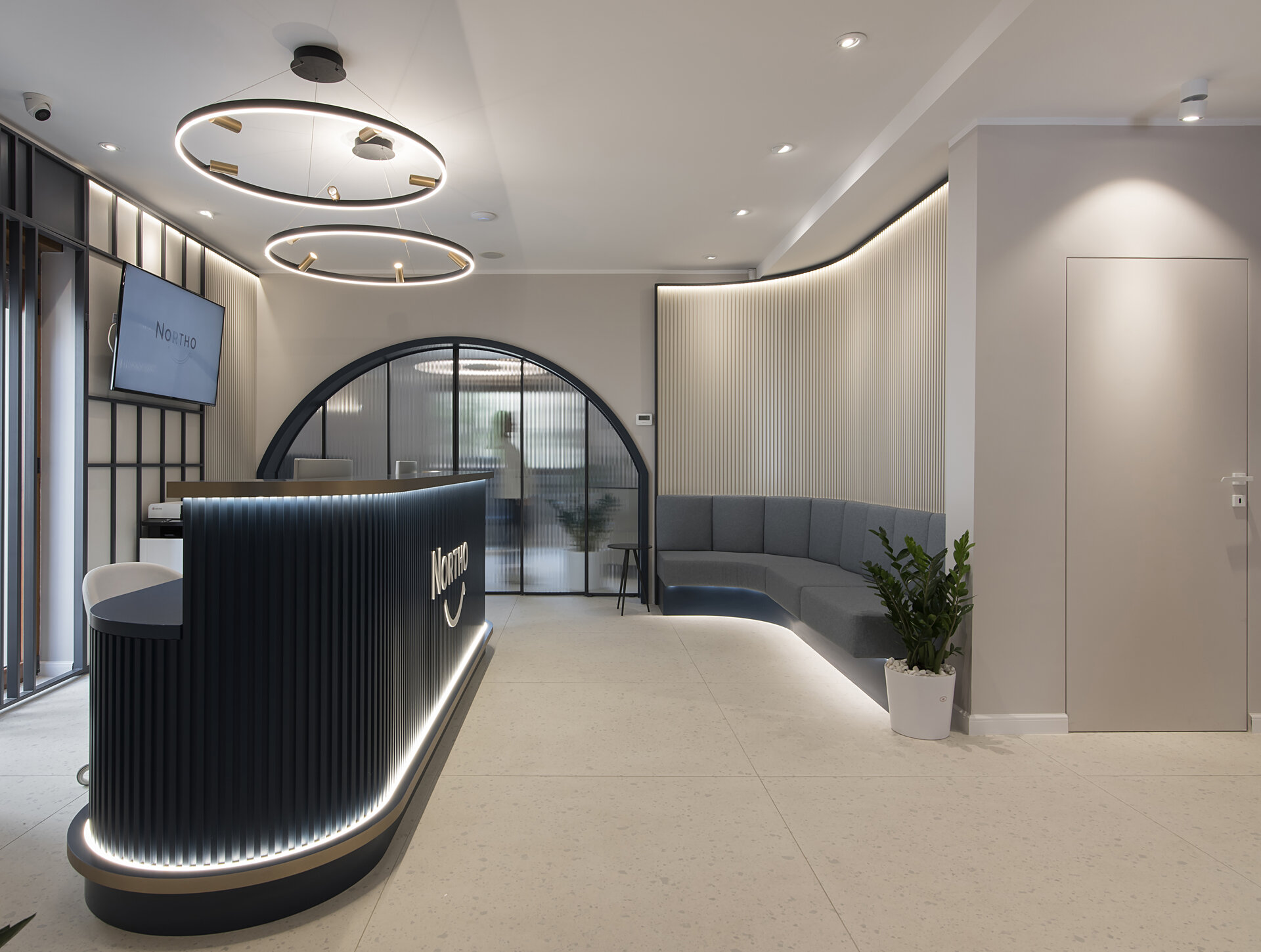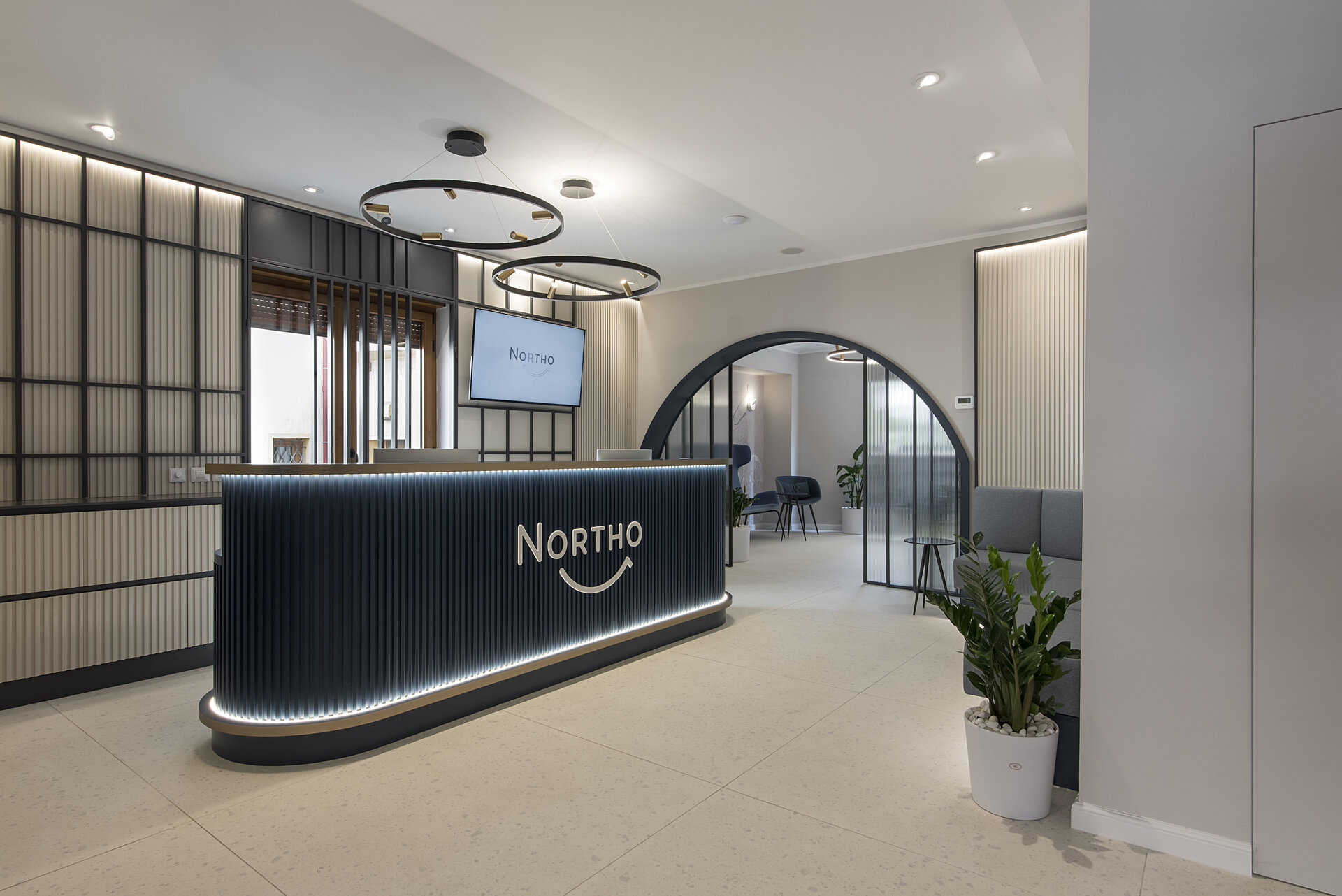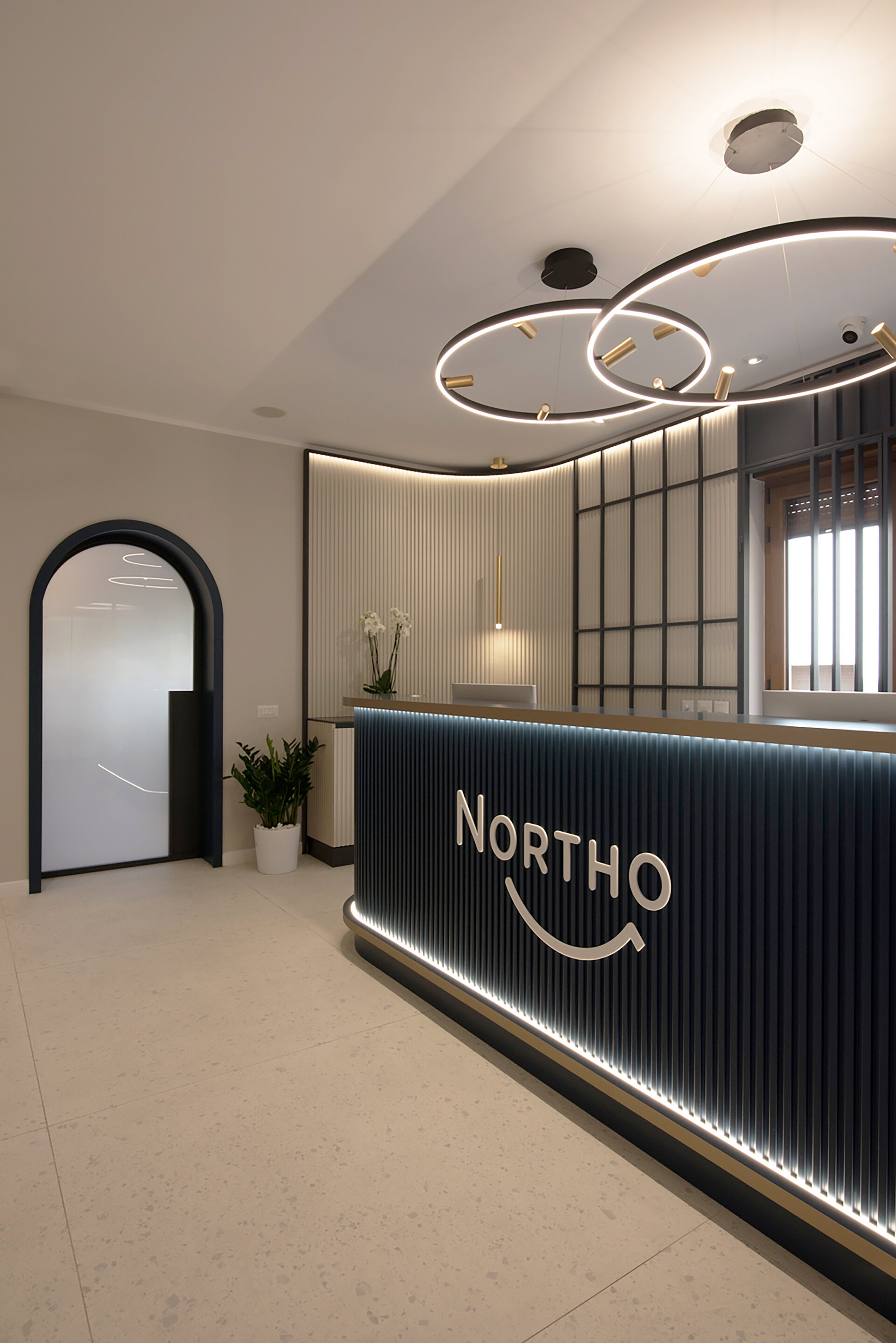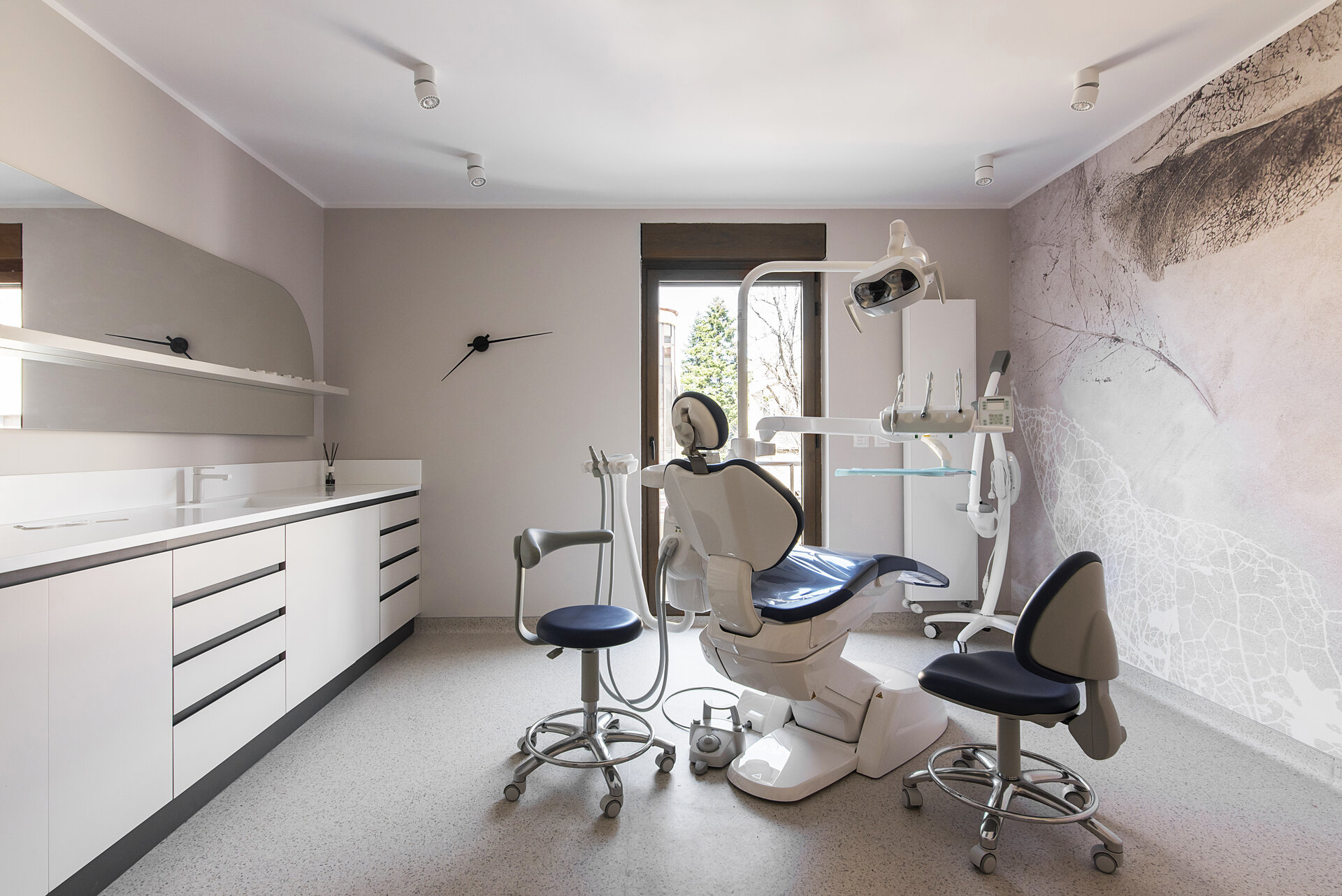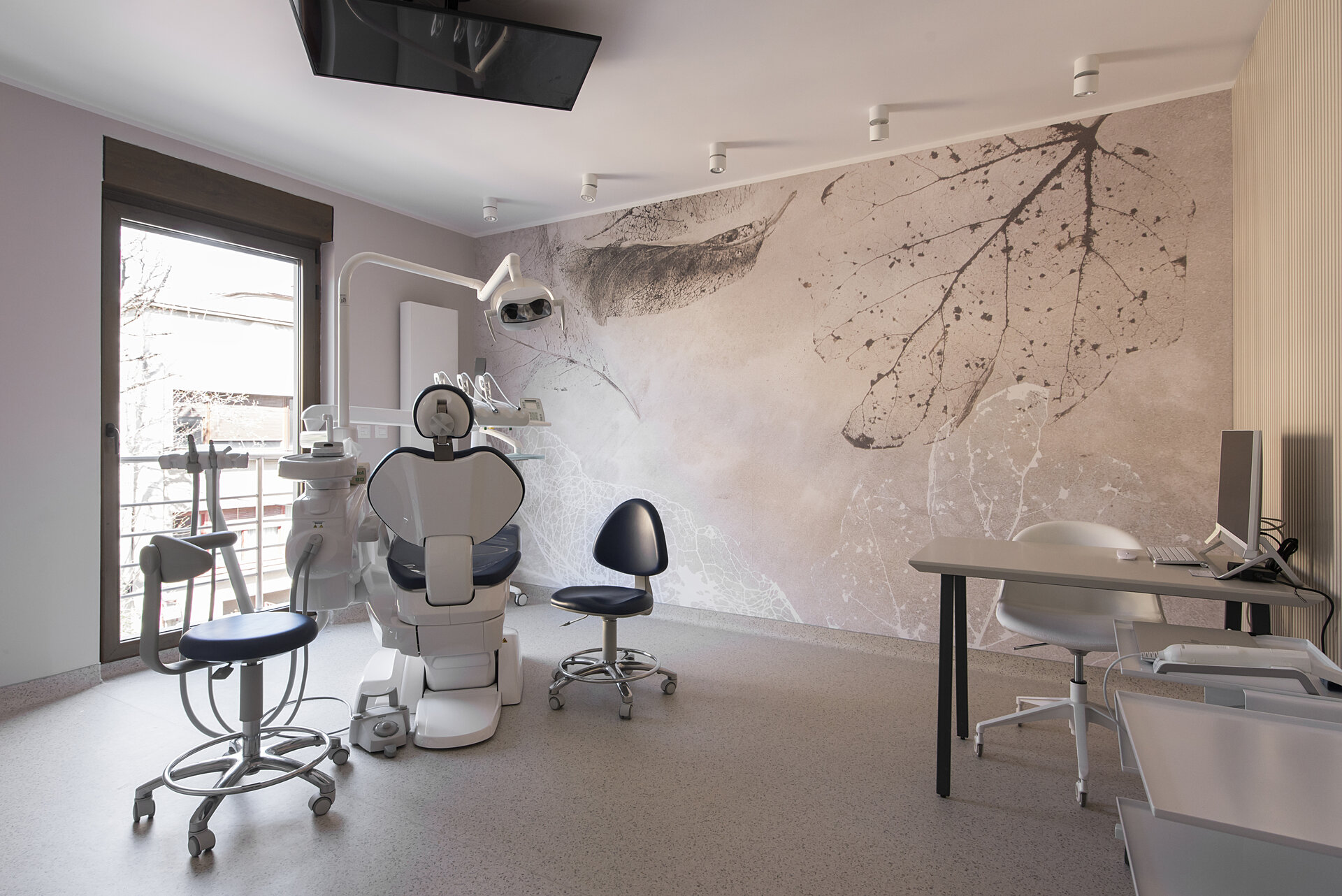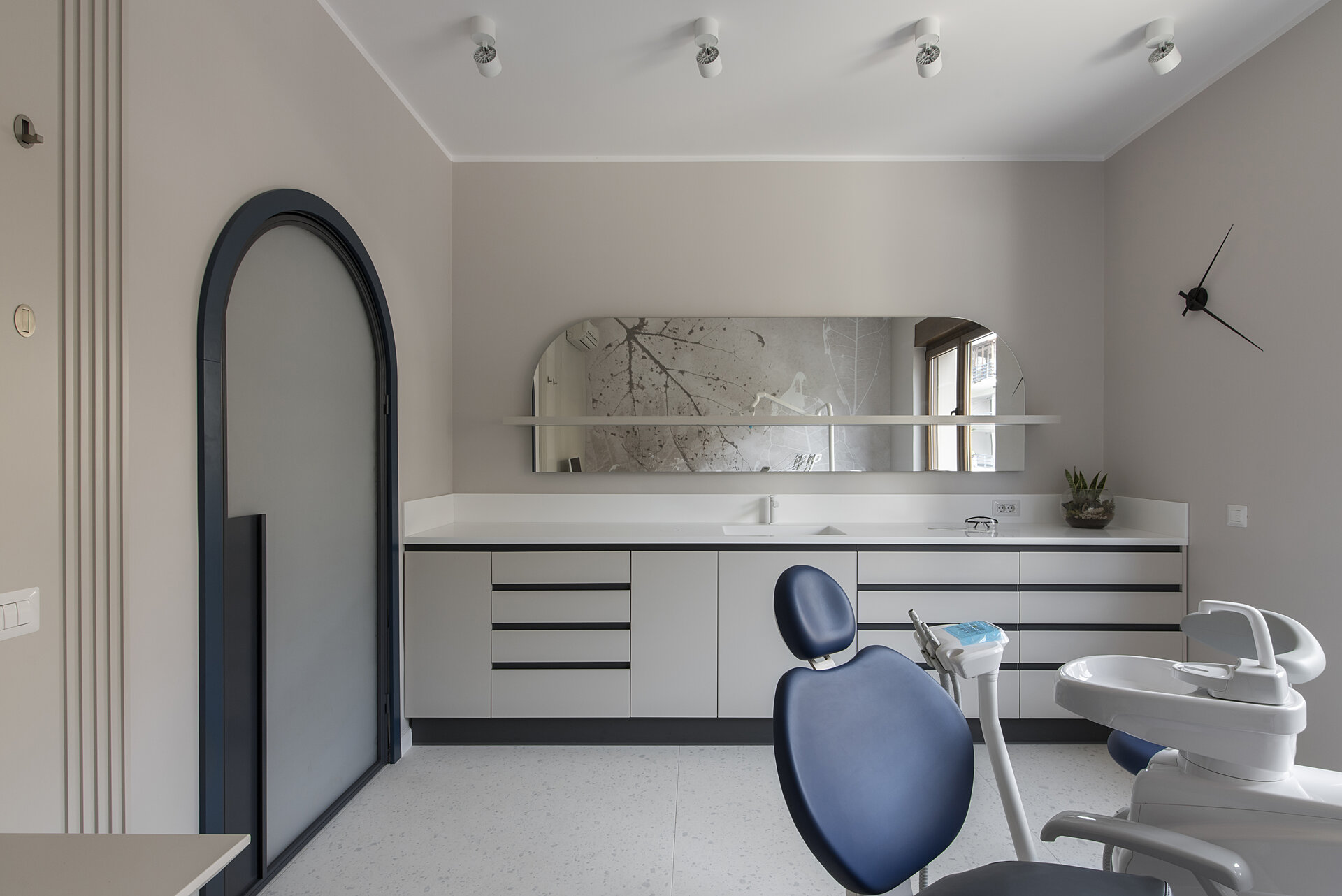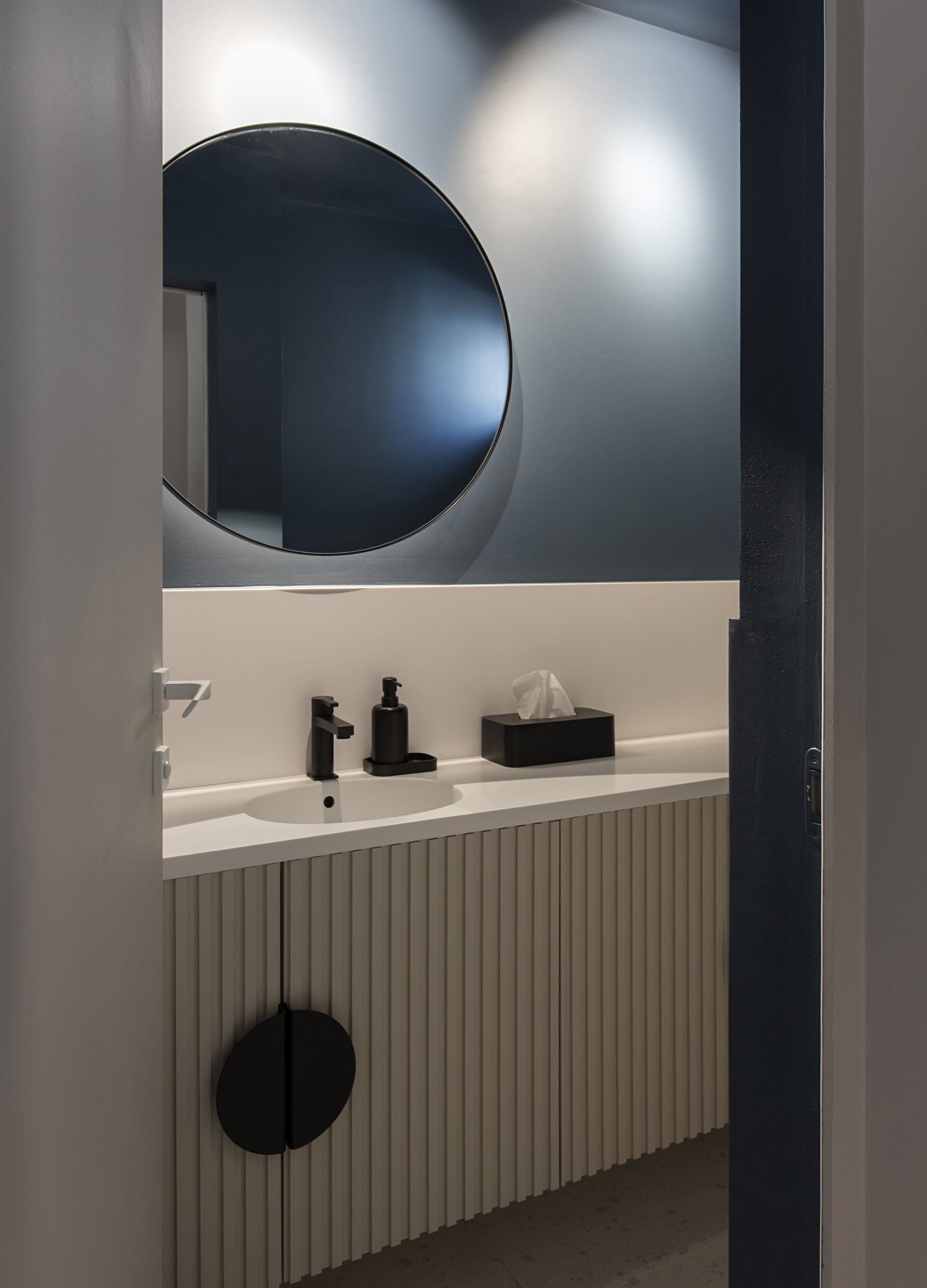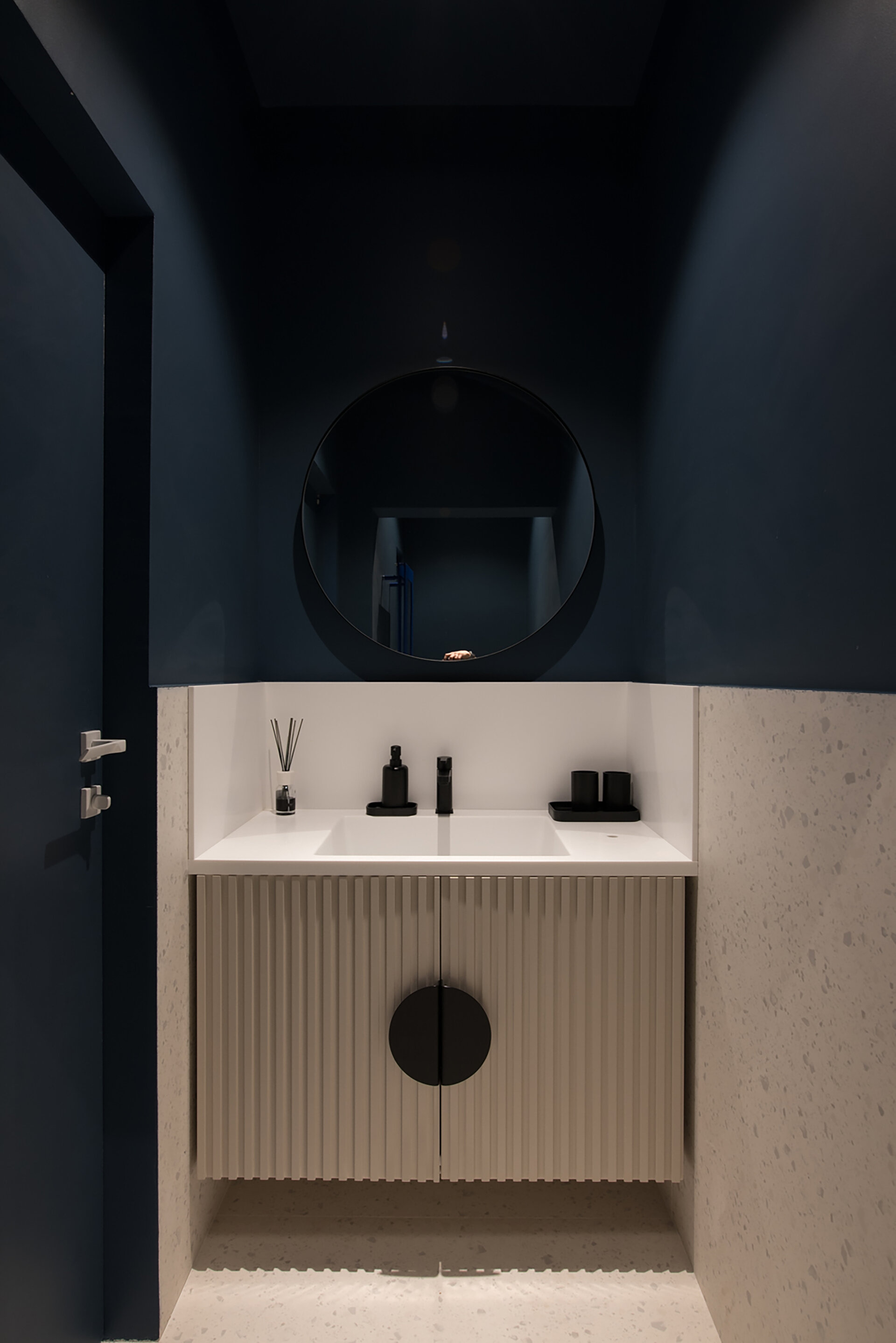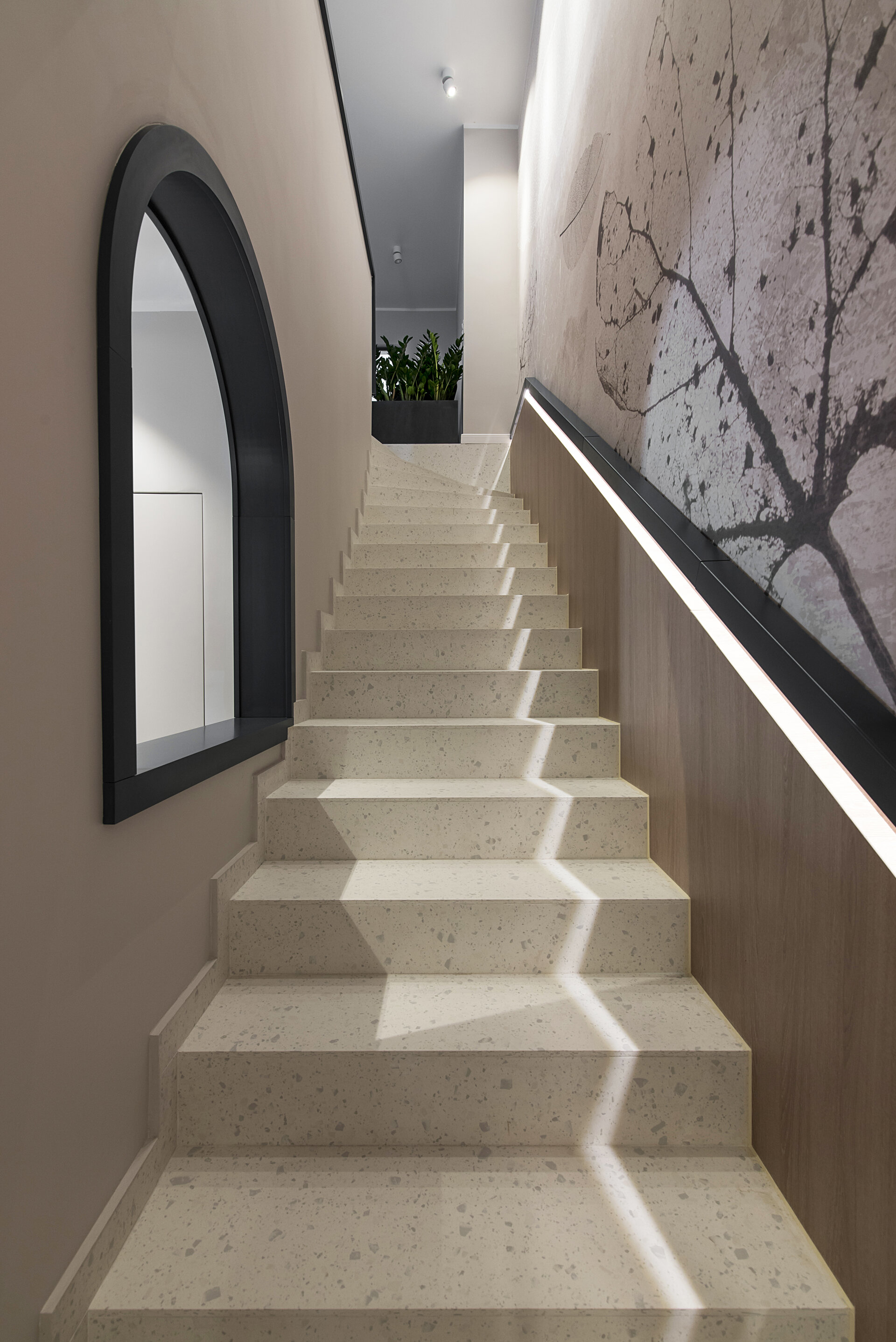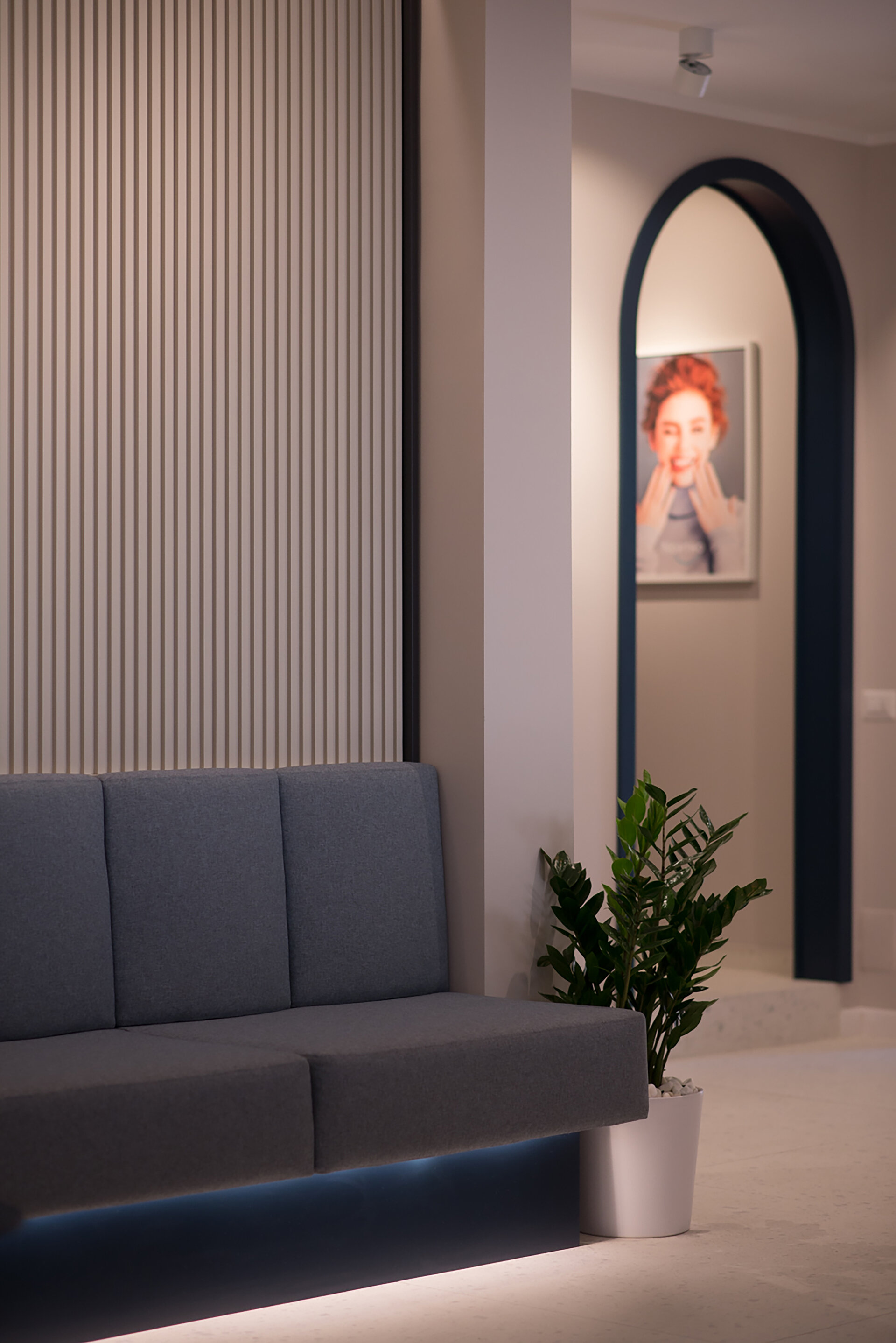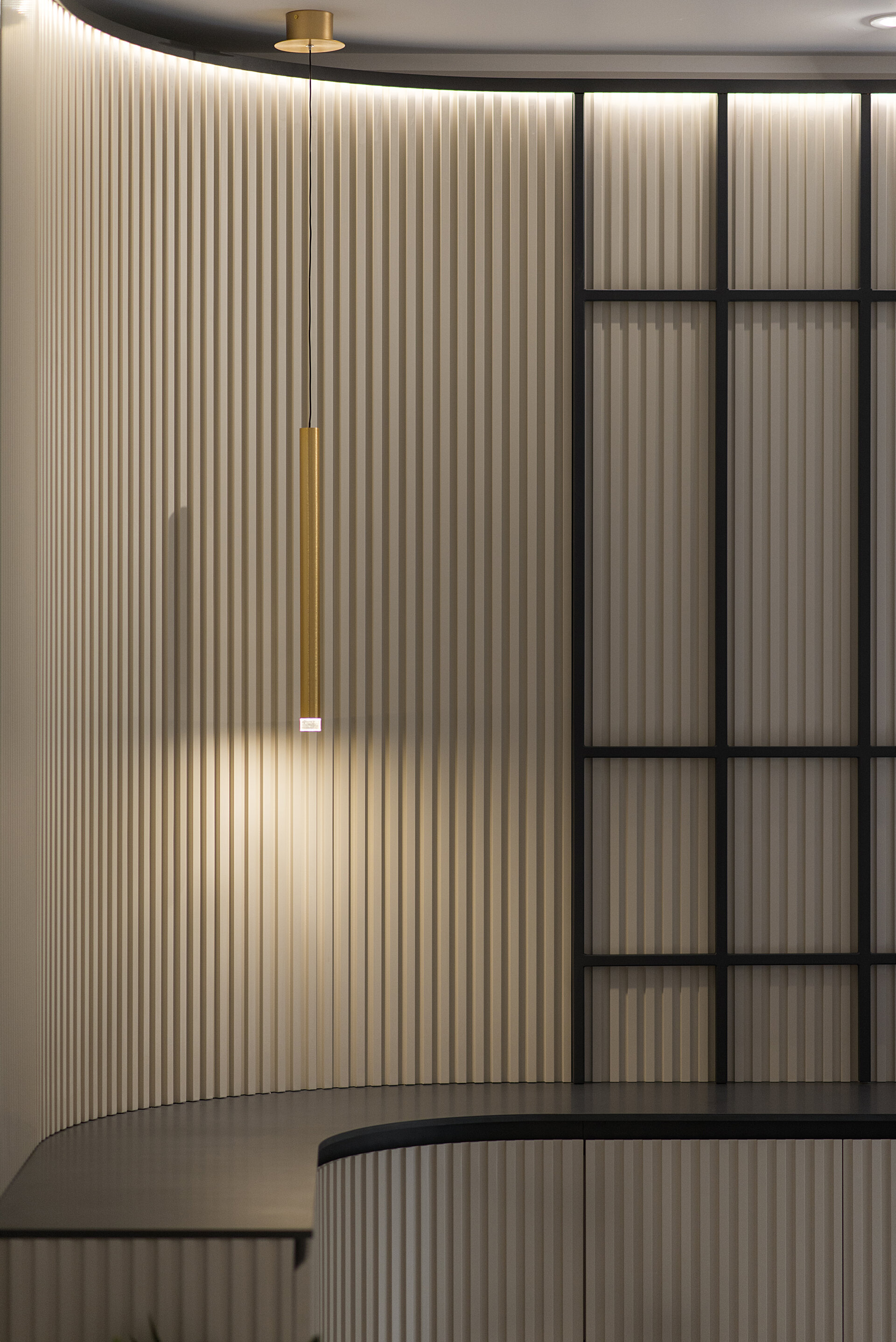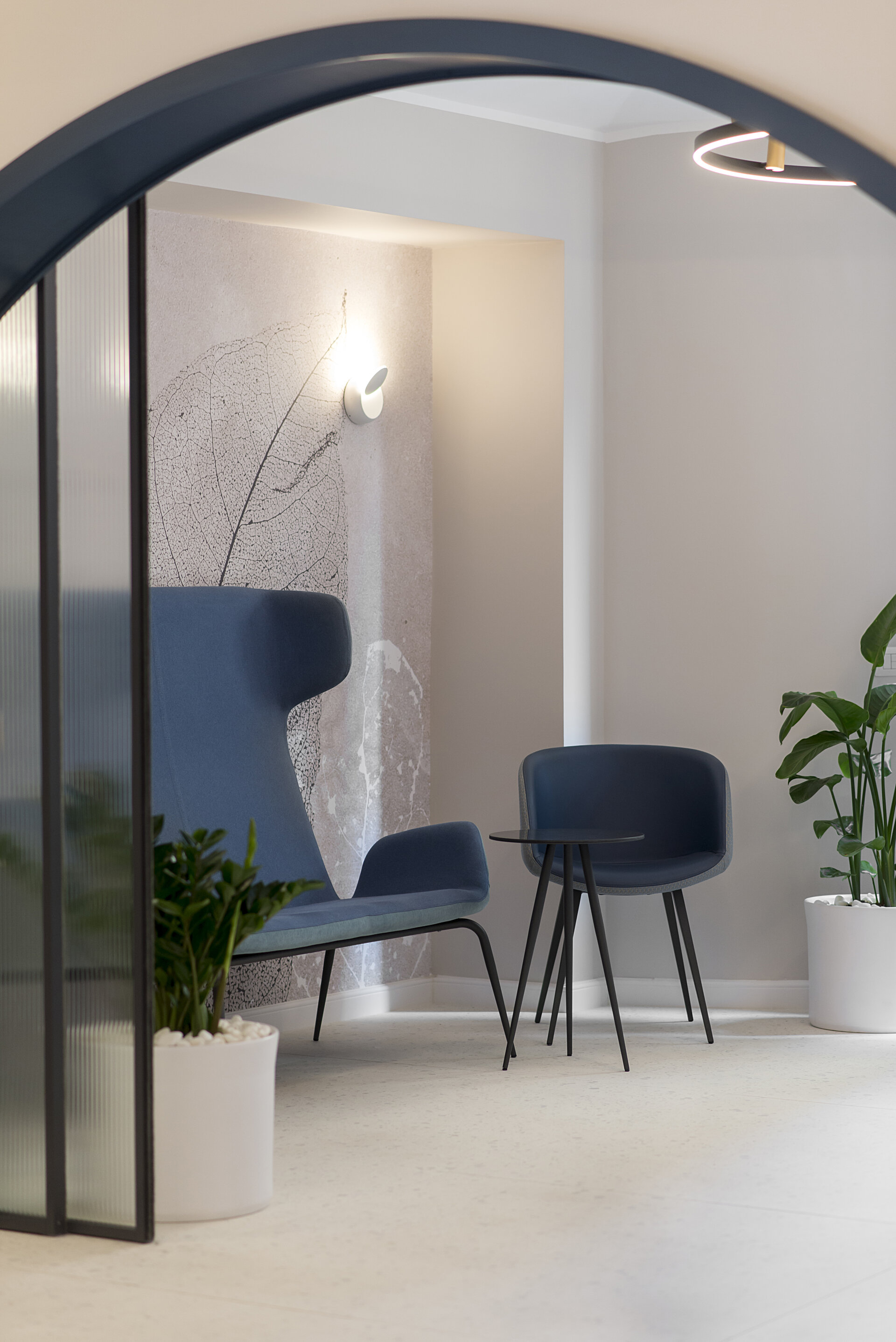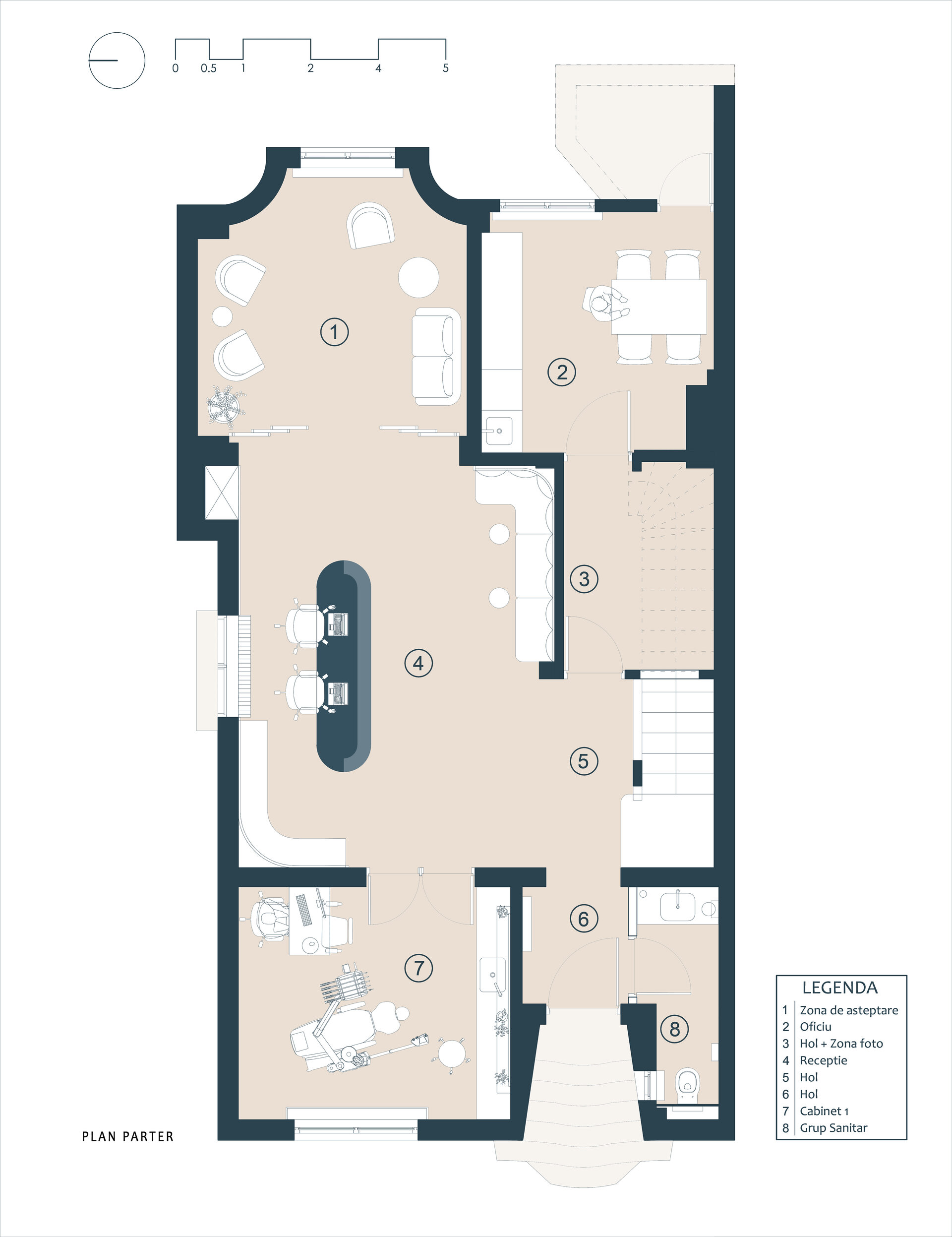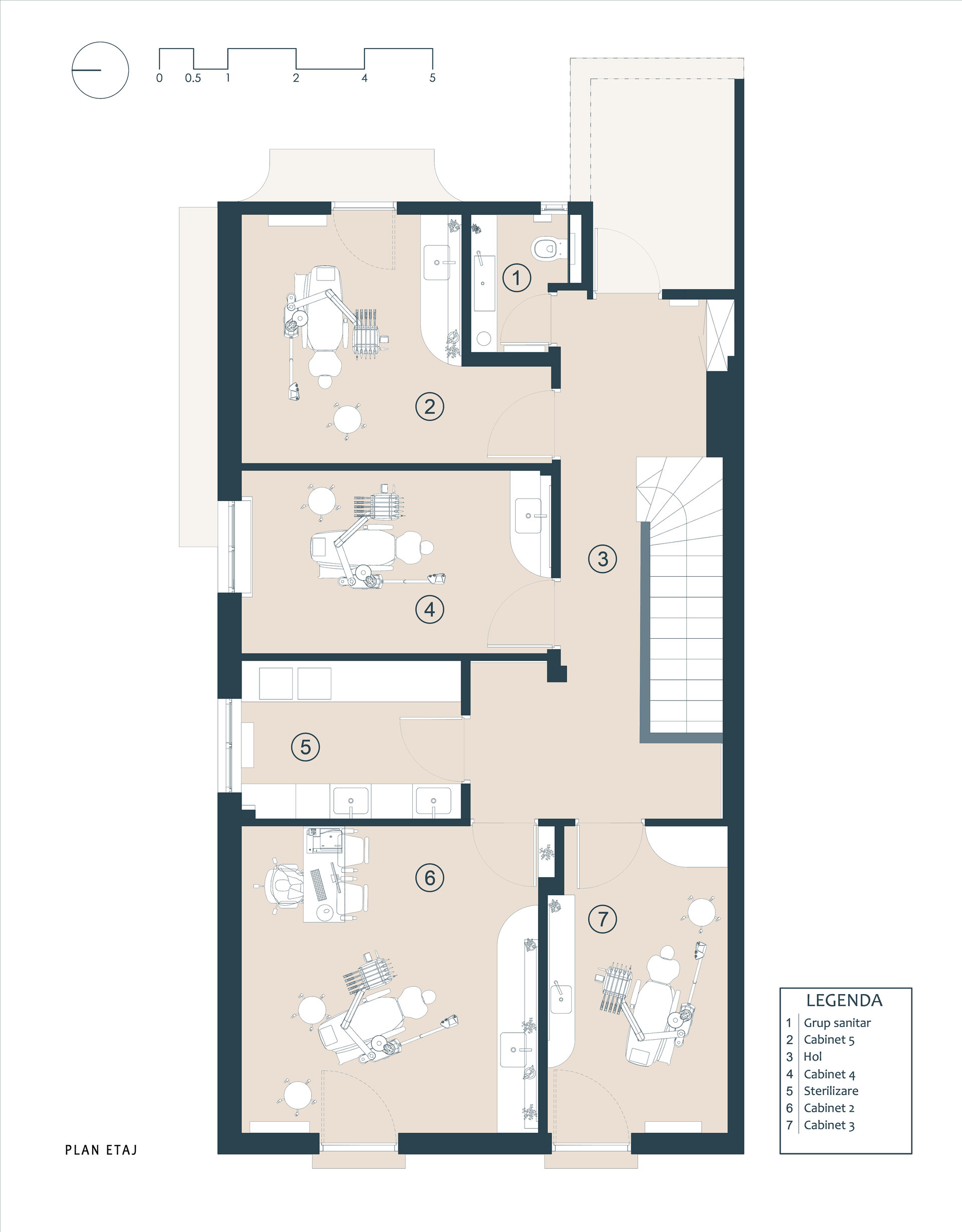
Northo Clinic
Authors’ Comment
The original home was transformed into an attractive dental clinic (the first fully digitized clinic in Romania, dedicated to orthodontics), preserving the interwar spirit of the existing rooms through a few spatial accents.
The extremely narrow entrance hall, equipped with a service bathroom, allows access to the reception area (the former living room of the original home) and to the vertical circulation node – a staircase in a single ramp with a curved termination to the landing area, attached to the main dividing wall of the villa. From this reception and the adjacent secondary hall, one can enter the first medical room facing the street, a waiting area imagined as a snug room with windows to the backyard and an office for doctors, with access to the garden terrace. The upper floor involved the transformation of the former bedrooms into four individual medical rooms, served by two bathrooms, in a configuration that respects the original domestic arrangement with reference to served and servant spaces.
The general atmosphere given off by the spatial experience is that of achieving a balance between visual and tactile oppositions. The reception area receives the most attention in this regard.
The space boundaries are so richly modelled with depths and reliefs that they do not bore the eye or overwhelm it. The arches specific to the interwar architectural language, which characterize the interior door openings (with double or single leaf), facilitated the visual interplay between curved and straight surfaces in all the rooms. The reception desk is curved, ribbed and dark blue, marked by raised edges like architectural cornices, with a precious brass look and doubled by LED light strips. The wall of the waiting area takes up the curve of the sofa, continuing the geometric and chromatic themes of the reception area. The prefabricated mosaic, with tiles fitted without visible joints, is another key element that evokes the preciousness of interwar finishes, as is the brass on the circular lighting fixtures. The third evocative element, is constituted by the beige panels with vertical riffle, a reference to the decorative interwar plasters.
Circular and rectangular forms, bright and dark tints, serial vibration and planar smoothness remain the compositional themes in both service spaces and medical rooms. The staircase provides visual cohesion between ground floor and first floor as an essential element of the interior promenade, articulating the space of reception and representation with individual treatment spaces. Surfaces with different graphic printed images also appear in medical rooms; they give an identity to these areas, preserving the general chromatic theme and the visual balance between the figurative and the abstract.
The quality of this interior also consists in the fact that it recalls the representational value of the entire neighbourhood, the meaning of an urban place where modernity and small regional-historical escapes can coexist without being embarrassed and without in any way degrading the experience of the place. The most important thing, however, remains the way in which the studio3plus team understood what is at stake in the arrangement of the surfaces, which do not become only visual limits capable of highlighting or hiding the structure behind them, but also independent embodiments, precise and motivated configurations, backgrounds, or figures involving a tactile assumption of the whole spatial experience.
- OTOTO Victoriei
- ALTRNTV
- Skywind Group Offices
- Irina Schrotter retail shop
- Funcom Games Bucharest office fit out
- DayVet
- Yuno Clinic – Pediatric Centre
- The historic salons of the Mița Biciclista House
- ANV_RO
- Discovery Arena
- Neoclinique
- Skytower Lobby
- Ogre Offices
- Interior design office space PEP
- Tree office
- Gym K1
- Office design for a Global Leader in Live Dealer Gaming: a winning Game!
- KRUK România Headquarters
- CMS România Headquarters
- SIF Imobiliare Business Lounge
- Townhall Registration Office District 6 - Cora Lujerului
- Neakaisa.ro showroom. The gallery of Romanian bathroom design
- KPMG Romania
- Le Manoir
- McCann Romania
- HEI & Rompetrol
- Sameday Office Interior Design
- DKV Office Interior Design
- Interior design for reception and office Work&Travel Club
- Byonic Logistic Office
- Oracle office
- AECOM Office Interior Design
- Wirtek + ProMark Office Space
- EH Upgrade
- F64
- Yunity Reception
- Dermatology Clinic
- Northo Clinic
- Beautik Perfume Shop
- Colorbitor Office
- Tesla Group Headquarters
- BT Stup Offices
- Clinic Interior Design
